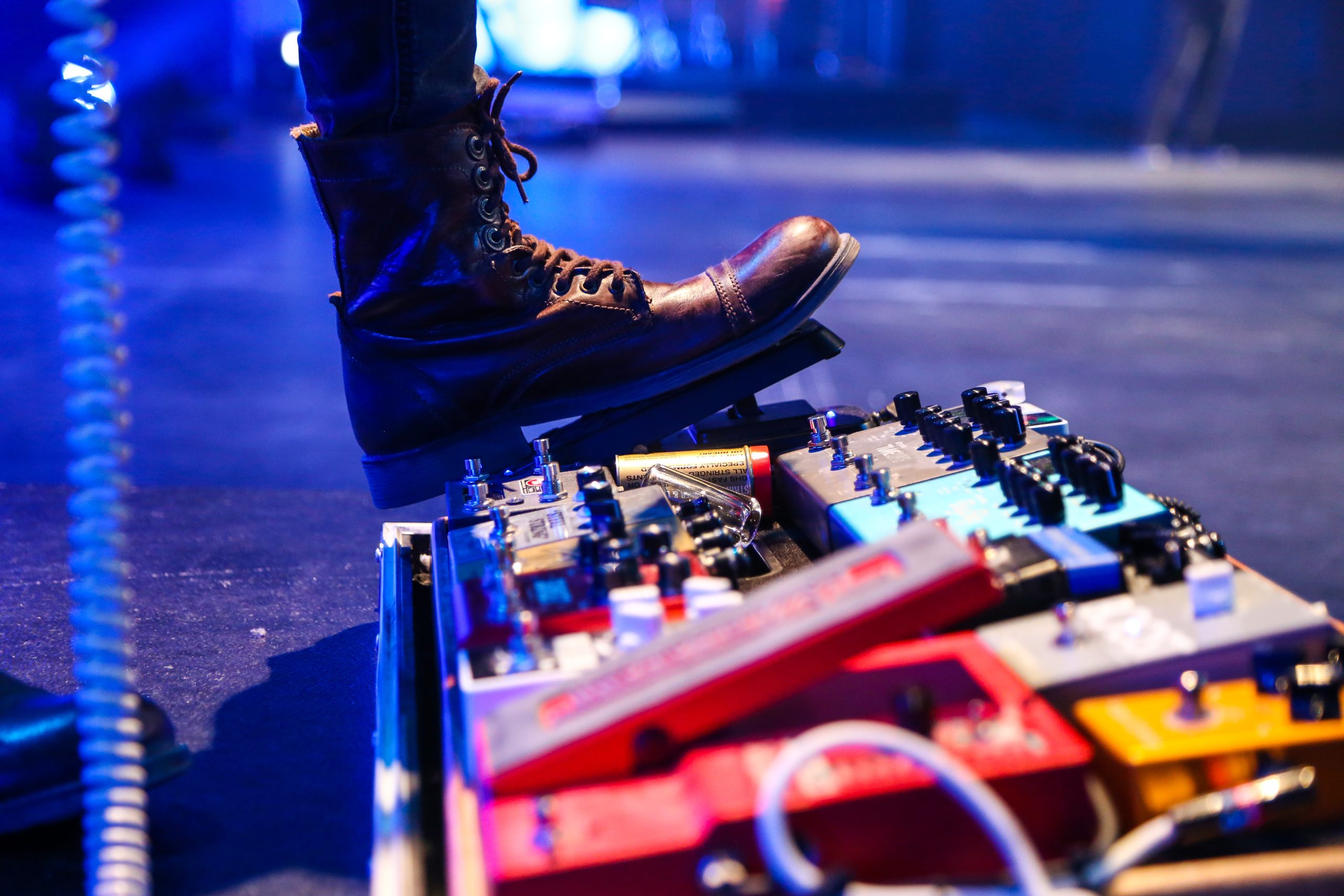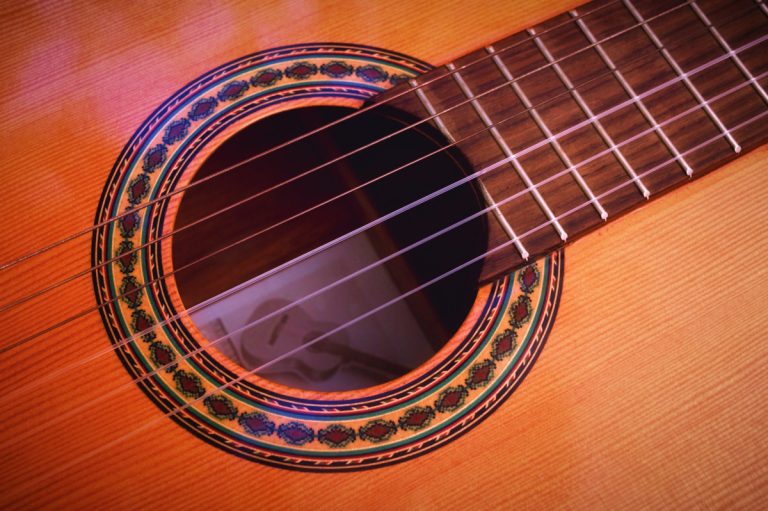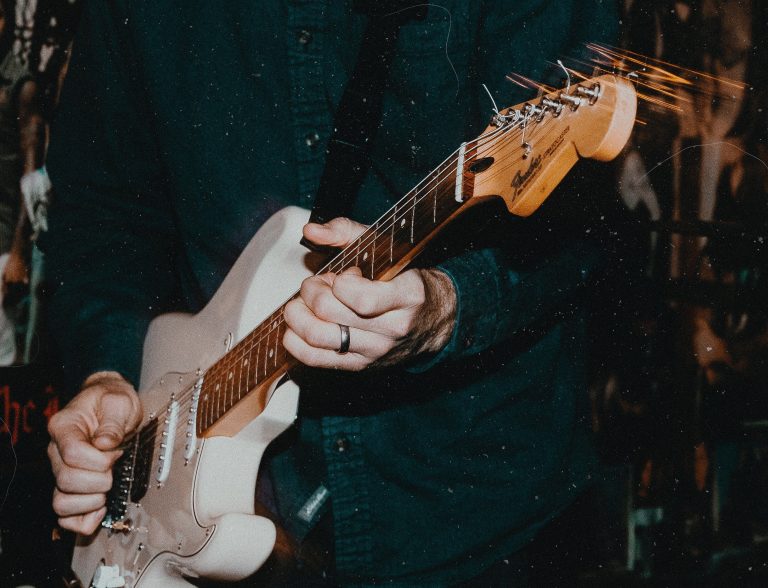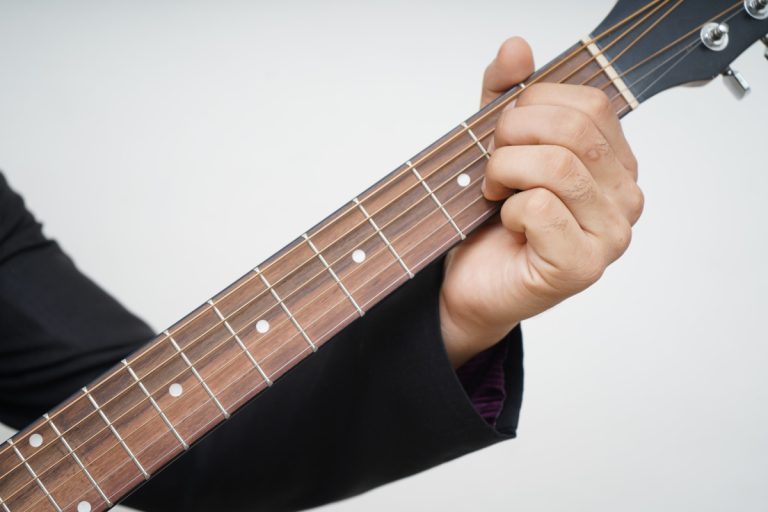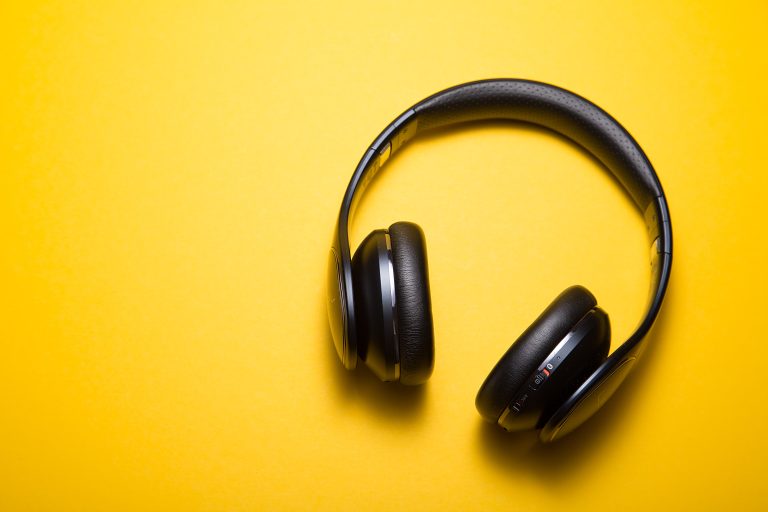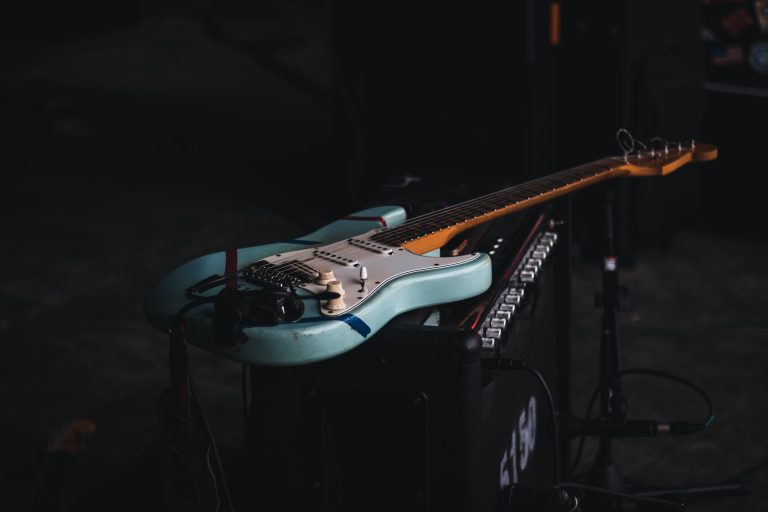Are you a bass player looking to take your sound to the next level? Then you need to know about bass guitar pedals. Adding a few essential pedals to your setup can give you more control and flexibility over your sound, enabling you to shape it how you want.
And don’t worry – even if you’re a beginner, you can get your hands on the best bass guitar pedals without breaking the bank.
In this article, we’ll give you an overview of what bass guitar pedals are, some essential ones that all bass players should have in their arsenal, and our top picks for the best budget options. So read on to learn everything you need about bass guitar pedals!
What Is a Bass Guitar Pedal?
Bass guitar pedals, also known as effects units, allow you to manipulate the sound of your bass guitar. They come in various shapes and sizes – from small, compact pedals to large floor-based units – each designed to do something different.
Pedals can be used for everything from adding distortion or reverb to creating mind-blowing effects like delays and loopers. These can help you shape your sound uniquely, giving you more control over how it sounds.
History of Bass Guitar Pedals
The history of bass guitar pedals goes back to the late 1960s and early 1970s when musicians started experimenting with effects units. At first, these devices were quite limited in what they could do, but as technology progressed, so did the capabilities of these pedals.
In the 1980s and 1990s, manufacturers started creating more sophisticated pedals that could mimic the sounds of classic amplifiers and even create new ones. Since then, the range of pedals available has only grown – with more manufacturers making increasingly complex effects units.
Why Should Bassists Use Bass Pedals?
Bass guitar pedals are essential for any bass player who wants to expand their sonic palette. Not only do they give you more control over your sound, but they can also help add texture and character to your playing – something that’s often difficult to achieve with just an amp alone.
Having a few different effects units on hand can also be helpful for live performances, as they give you more flexibility and control over your sound in other settings.
Can Guitar Pedals Be Used For Bass?
Yes, guitar pedals can be used for bass – although it should be noted that some pedals are designed specifically for bass and others are made with guitarists in mind.
Generally speaking, it’s best to stick to pedals specifically designed for bass, as they will have better features and sound quality than those made for guitars.
Different Types of Bass Guitar Pedals
The most common bass guitar pedals are distortion, overdrive, fuzz, compressor, chorus, phaser, envelope filter and octave. These pedals create a wide range of sounds and can enhance your bass playing.
Volume Pedals
A volume pedal is a valuable tool for bassists, allowing them to quickly adjust their signal without manually turning down the amp or instrument. Chromatic tuners often use volume pedals to fine-tune the player’s sound while providing an audible signal. By pairing the volume pedal with other pedals, bassists can quickly and easily craft their desired sound without making numerous manual adjustments. While the volume pedal itself may not be handy on its own, it is an invaluable part of a bassist’s rig when paired with other pedals.
Volume pedals are commonly adjusted using a foot pedal that controls the overall volume output. With this control, bassists can easily adjust on stage during a performance or in the studio while recording. They also provide a great way to mute the instrument, allowing quick transitions between songs or sounds. These features combined make volume pedals an essential tool for any bassist.
Ultimate Control Over Your Performance
Perfect For: Beginner To Advance
Features: It has a rugged die-cast metal body, non-slip rubber grips, and adjustable torque for smooth pedal operation.
Other Info: Output jack for connecting to tuners
Pros:
- Smooth pedal operation
- Robust construction
- Easy-to-use design
- Tunable tension control
- High-quality potentiometer for reliable performance
- Customizable expression range
Cons:
- Can only be used for one instrument
- Takes up quite a bit of space on the pedalboard
- Require some time to adjust for optimal sound
The TedScore: 9/10
Step Up Your Music with the Fender FVP-1.
Perfect For: Beginner To Advance
Features: It features a special tone circuit that retains clarity as the volume is reduced without becoming dark or muddy.
Other Info: It has an input, output, and tuner jack on the front panel for easy access.
Pros:
- Allows for easy and precise volume control
- Heavy-duty casing ensures durability
- Compact and portable design is great for travelling
- Tuner Out Jack allows for convenient tuning
- Specially designed potentiometer provides quiet operation
Cons:
- Not suitable for use with active pickups
- Requires an additional power supply if using higher output levels
The TedScore: 9/10
Ernie Ball VP 40TH Anniversary Volume Pedal
Get the Best in Volume Control with the VP 40th
Perfect For: Beginner to Advance
Features: Anodised aluminium chassis with ultra-durable kevlar cord.
Other Info: Accepts passive and active signals, independent tuner output, and internal switch to alter sweep characteristics.
Pros:
- High build quality
- Durable construction
- Smooth, precise control
- Responsive control surface
- Versatile connections
- Compact design
Cons:
- Some players may find the sweep to be too abrupt
- Size might be an issue for some pedalboards
The TedScore: 9/10
Octave Pedals
Octave pedals are a great way to add depth and variety to any guitar player’s sound. When employed, they can shift an incoming signal up or down in octave intervals, producing an effect that mimics the sounds of traditional synthesizers.
They often provide two distinct tones: a clean high octave and a distorted low one. This can create an extensive range of sounds, from mellow and dreamy tones to aggressive and assertive bass-heavy textures. Octave pedals are also great for creating vocal-like effects by blending multiple octaves.
A Powerful & Versatile Bass Octave Effects Pedal
Perfect For: Beginner To Advance
Features: Equipped with 18-volt Constant Headroom Technology
Other Info: Dry and Mid+ Switch for mid-frequency boosts(400Hz or 850Hz)
Pros:
- Crisp tracking and clean sound
- Generous headroom for dynamic performances
- Adjustable mid-frequency boosts
- Two-octave voices for added texture.
- True bypass circuitry.
Cons:
- None
The TedScore: 9/10
TC Electronic Sub ‘n’ Up Octaver
Step Up Your Sound With the TC Electronic Sub ‘n’ Up Octaver
Perfect For: Beginner To Intermediate
Features: It combines the latest polyphonic pitch technology with monophonic octaver capabilities, allowing you to create complex and unique tones.
Other Info: The input and output are 1/4″ jack cables, and 9V DC powers it.
Pros:
- High-end octave tones when playing chords
- Access to anything from shimmering octave-up tones to deep subsonic octave riffs
- Polyphonic pitch technology ensures lightning-fast tracking
- True Bypass preserves your natural tone even when switched off.
Cons:
- The lack of separate outputs for the original sound and the octaven creates limited sound-sculpting options.
- Depth might be too large for some rigs.
The TedScore: 8/10
Electro Harmonix POG 2 Polyphonic Octave Generator
Tone chameleon for advanced players
Perfect For: Advanced players
Features: Comes with 8-preset memory with instant recall
Other Info: True bypass and 9DC-200 power supply included.
Pros:
- Offers complete creative control in a compact package.
- Clean tracking and detailed octaves that scale well with the input.
- Smooth, adjustable attack/delay fade-in time lets you dial in exactly the right sounds for your playing style.
- Wide range of sounds, from subtle to extreme, makes it usable for studio and live applications.
- Intuitive control makes it easy to modify and experiment with sounds
- Can be used in tandem with other effects for more creative possibilities.
- Low Pass filter with selectable Q
Cons:
- The pricy side, but worth it for the features
The TedScore: 9/10
Overdrive Pedals and Distortion Pedals
Overdrive pedals and distortion pedals are both effects that add gain to your signal, providing a more intense sound. Overdrives create a ‘hollow’ tone, while distortions have a more ‘full’ bottom-heavy tone. Both pedals increase the signal to minimal clipping so that when you turn up your music loud, it won’t become distorted and fuzzy.
Although their functions can vary depending on the make and model of the pedal, commonly, they come with controls such as Gain, Tone to compensate for other highs caused by the clipping process, Volume or Level to balance the effect volume and bypassed level, and Bass/Treble/Mid-tone control options. Both pedals distort to enhance your sound with more saturation, grit, and aggression – allowing you to explore a whole new range of tones and sounds.
Source Audio LA Lady Overdrive Pedal
Get Classic, Crunchy and Smooth Overdrive
Perfect For: Intermediate and Advanced players
Features: It features two 1/4” jack inputs and outputs, a control input, a USB port, a DC 9V input and four controls for drive, level, bass and treble
Other Info: It is compatible with the Neuro app for easy editing, and customized effects can be saved and shared with an ever-growing community of users.
Pros:
- Variety of tones, classic fuzz sounds, as well as advanced modulation options
- 128 saved presets available
- Ability to connect a footswitch for increased control in live situations
- Lightweight
- Easy to use and intuitive design
- Rugged aluminium housing for long-lasting durability
- Can be difficult to adjust settings precisely due to the lack of digital controls/display.
- True bypass and buffer options
Cons:
- Can be pricey compared to other overdrive pedals on the market.
- May not be suitable for players seeking extreme levels of gain or distortion.
The TedScore: 8/10
JHS Pedals Moonshine V2 Overdrive and Distortion Pedal
Get Mid-Heavy Tone for Your Rig
Perfect For: Beginner to Advance
Features: Features a classic tone circuit with 4 easy to use controls – Volume, Drive, Tone & Clean.
Other Info: An internal 9v to 18v charge pump for added headroom and punch.
Pros:
- Versatile, mid-heavy tones for a variety of styles
- Easy to use control knobs
- Compact size, perfect for stacking on top of your rig
- Adds its character to the sound of your setup
- Low gain warmth with the 2-position toggle switch
- Extra punch that will slice through any mix.
- Hand-crafted by highly skilled pedal builders in Kansas City, USA
Cons:
- No true bypass switch
- Controls may be too simple for some players
- Battery life is limited
The TedScore: 9/10
Ampeg Scrambler Bass Overdrive Pedal
Classic Ampeg grit and grind with modern effects
Perfect For: Beginner To Advance
Features: Separate drive and blend controls let you dial in the perfect wet and dry signal blend.
Other Info: All-metal chassis construction
Pros:
- Delivers classic Ampeg grit and grind with modern effects.
- True bypass circuitry ensures the maximum signal-to-noise ratio.
- Wide range of tones is available with a simple twist of the knobs.
- Ideal for more extreme levels of distortion and overdrive, with its dedicated level control adding extra headroom.
- Compact and rugged design, perfect for on-the-go players.
- Durable all-metal chassis construction provides great protection while on the road.
Cons:
- Battery not included, which may be inconvenient for some players.
The TedScore: 8/10
Envelope Filters and Wahs
Envelope filter and Wah effects pedals are a great way to add spice and character to your bass sound. They work by shifting the frequency range of your bass signal up and down, depending on how you move the pedal. The more you rock the pedal back, the more comprehensive your tone becomes; rocking it forward makes the sound thinner and more top-heavy.
An envelope filter, or auto-wah, furthers this concept by automating the frequency alteration process. With an envelope filter, your bass sound is changed based on how you play it – the louder or more sudden your attack, the wider and more intense the wah effect will be. This lets you create a wide range of sounds and textures with your bass, giving you plenty of flexibility to craft unique tones.
Mooer MAW2 Envelope Analogue AutoWah Pedal
Features an entirely analog circuit to give you a warm, vintage sound.
Perfect For: Beginner
Features: It has four simple yet dynamic controls for sensitivity, Q, decay and tone to shape your sound to suit your style.
Other Info: This pedal is part of the Mooer Micro Series and takes up very little space on even the busiest pedalboards.
Pros:
- Compact design perfect for any pedalboard
- Sensitivity control allows you to adjust the filter’s response
- Q control provides a pronounced or subtle wah effect
- Decay control alters the opening and closing of the filter
- Tone control adjusts the wah’s sonic characteristics
- A great value for the price
Cons:
- Can be tricky to get used to the settings and adjust accordingly
- Some users have noted the volume drops when using this pedal
The TedScore: 8/10
Classic Analogue Filter Tones for Bassists
Perfect For: Advance players
Features: It boasts a noise floor of -98 dBV and allows filter sweeps from 76Hz to 3.2kHz with adjustable sensitivity range between 46dB.
Other Info: The MXR M82 also has a decay stop frequency of 76Hz to 1.3kHz for more control over your tone.
Pros:
- True hardwire bypass
- Durable aluminium housing
- Power circuit capable of withstanding high voltage or polarity mishaps
- Easy to transport
- Adjustable filter sweep, sensitivity and decay frequency.
- Allows for classic analog filter tones
- Compatible with guitars, too
Cons:
- Some users may find the controls to be a bit fiddly.
- Not as many filter tones as some other pedals
- Black housing design may not appeal to all.
The TedScore: 8/10
Electro Harmonix Micro Q-Tron Envelope Filter
Get Full Control of Your Sound with the Electro Harmonix Micro Envelope Filter
Perfect For: Beginner To Advance
Features: This pedal offers three responsive dials, allowing you to dial in various envelope filter voicings and tones easily.
Other Info: It even runs on a 9V battery or PSU for added convenience.
Pros:
- Three responsive dials with great range of voicings
- Super compact and sturdy chassis
- True bypass footswitch
- Durable and road-ready design
- Quickly dial in a range of envelope filter sounds
- Adjustable intensity and volume settings
Cons:
- Require some time to get accustomed to the sensitivity and threshold settings
- May not work well with specific instruments or pickups, particularly those with a weaker output
- Tone can get overwhelming when pushed to extremes
The TedScore: 9/10
Chorus Pedals
Chorus pedals are among the most versatile effects in any guitarist’s arsenal. They can add shimmer and depth to your tone or take it out into more experimental territory. Chorus Pedals create a “swirling” effect by combining multiple copies of the same signal with different delays and pitches.
The effect produces two distinct signals; the dry signal (left untouched) and a modified signal treated with reverb and delay. This creates an “echo-ey” sound, giving any music piece a unique sonic texture. With the correct settings, chorus pedals add atmosphere to your songs or take them to more ambient places.
Source Audio Gemini Chorus Electric Guitar Pedal
The All-In-One Modulation Tool for Guitarists
Perfect For: Intermediate and advanced guitar players
Features: Three preset modulation modes provide classic, popular and refined sounds.
Other Info: Integrated Neuro mobile app that allows you to download and save your customized effects to the pedal.
Pros:
- Easy to use and customize
- Can save up to 128 presets
- Tap tempo for quick timing control
- Compatible with Hot Hand 3 Universal Controller and Source Audio Expression controls
- Comes with compatibility with MIDI functions
Cons:
- Can be pretty pricey compared to other pedals
- Complexity of the three preset modes may be too much for some players
- Limited range control in live situations
The TedScore: 9/10
TC Electronic Corona Mini Chorus Pedal
Ultra-Small and Big on Tone
Perfect For: Beginner to Advance
Features: Classic SCF and TriChorus effects
Other Info: TonePrint technology
Pros:
- Compact size saves space on your pedalboard
- Flexible TonePrint editor for custom settings.
- True Bypass for zero sound degradation when turned off.
- Tone knob for controlling the amount of chorus effect.
- High-quality components ensure durability and long life.
Cons:
- Requires 9V power supply (not included).
- It isn’t possible to switch between factory default settings and Tone Print.
The TedScore: 9/10
Ampeg Liquifier Analogue Bass Chorus Pedal
Create Melodic Bass Lines with Ampeg Liquifier Analogue Chorus Pedal
Perfect For: Beginner To Advance
Features: The Ampeg Liquifier has a 3-knob setup that allows you to explore ethereal and distorted soundscapes.
Other Info: Weight: 0.3kg
Pros:
- Delivers classic through-zero flange effects
- Widens your overall sound
- Tweak the rate and depth to create unique soundscapes
- Great for experimentation
Cons:
- Some players may not like the amount of control offered
- May be noisy.
- It can have an uncomfortably hard pop when engaged.
- The rate control taper is not evenly distributed.
The TedScore: 8/10
Reverb and Delay Pedals
Delay and reverb pedals are essential tools for any serious musician looking to add depth and character to their performances. Delay pedals replicate the echoing effect of hitting a table with your hand, creating an ambient sound that can be manipulated to create many sonic effects.
Reverb is similar in concept but is more tailored explicitly towards replicating the classic sounds of vintage Fender amplifiers. Delay pedals typically have a set of basic controls such as delay time, delay level, and feedback sets that allow you to dial in the perfect sound. Reverb and delay can be used together to craft lush musical passages or create more complex soundscapes for your studio recordings.
MXR M299 Carbon Copy Mini Analog Delay
Tiny Box, Huge Possibilities
Perfect For: Beginner To Advance
Features: Loaded with analog dark and mysterious delay tones as well as a bright mode for lead lines and solos
Other Info: Mini pedal size fits into even the most packed of boards; True bypass switching.
Pros:
- All of the old-school analog delays sound that Carbon Copy is renowned for.
- Small footprint that fits perfectly on any pedalboard.
- Clean tones when the effect is turned off.
- Variety of delay times
- An extensive array of controls for complete control over your sound.
- Maximum signal integrity and minimum loss of tone.
Cons:
- Bright switch is not top-mounted, so it can be difficult to access.
- Lack of expression pedal input for control over delay time or mix
The TedScore: 8/10
Most Advanced Delay Pedal
Perfect For: Beginner To Advance
Features: 3 output modes: Independent, Panning and Wide Stereo.
Other Info: 11 versatile delay effects.
Pros:
- Variety of effects and settings to choose from
- Independent mode provides parallel delays on the left and proper channels
- Panning mode allows for a classic ping-pong effect
- Wide stereo mode provides exceptional depth to the sound
- Carryover switch
- Small size and lightweight
Cons:
- None
The TedScore: 9/10
Wampler Ethereal Delay & Reverb
Get Ambient Bliss in an Instant with The Wampler Ethereal Delay & Reverb
Perfect For: Beginner To Advance
Features: Top-mounted jacks for convenient access
Other Info: Dimensions: 63.5mm x 144.3mm x 38.1mm
Pros:
- Easy-to-use controls allow for quick sound sculpting
- Relay true bypass w/ soft switch for seamless switching between sounds
- Two delay and reverb effects in one box for a spacious tonal palette
- Buffered bypass for keeping your sound pristine
- Premium quality components for professional results
Cons:
- Only two effects are available at once
- The price might be too steep for some guitarists
The TedScore: 8/10
Compression Pedals
Compression pedals are used to create a more consistent guitar sound. Compressing the entire signal evens out high and low frequencies, resulting in a normalized tone that sits better in the mix without sacrificing too much of the overall guitar sound quality.
Due to this effect, compressors are usually positioned at the end of a pedal chain rather than at the beginning or middle. Compressors can also increase the sustain of notes and provide a more dynamic sound.
Origin Effects Cali76 Compact Bass Compressor
Get Studio-Quality Compression Anywhere
Perfect For: Beginner to Advance
Features: Discrete Class-A Circuits, Parallel Compression
Other Info: Powered by Mains Adaptor Only
Pros:
- Easy to use, intuitive controls
- Professional, transparent sound
- Compact design for portability
- Multiple compression settings and adjustable filters
- Jewel lamp function for easy monitoring
- High current design for low noise and better tone.
Cons:
- FET Mode Not Transparent
- No VU Meter Indication
- Big Footprint and Weight
The TedScore: 9/10
Darkglass Hyper Luminal Compressor
Digitally Model Iconic Compression Pedals in One Device
Perfect For: Intermediate to Advance
Features: 3 selectable modes, including Bus, Fet and Sym, with four adjustable knobs for controlling the mix, level, time and compression settings.
Other Info: Input and output impedance of 1M ohms and 1K ohms, respectively.
Pros:
- A wide range of compressor sounds in one device
- Intuitive controls for adjusting the parameters of the compression effect
- High input and output impedance for improved accuracy
- Analog signal path and modern DSP control provide great sound.
Cons:
- Very expensive compared to other pedals in its class.
- Can be difficult to dial in settings without a good understanding of compression.
The TedScore: 8/10
Orange Kongpressor Class A Compressor Pedal
Get Killer Tones With The Orange Kongpressor
Perfect For: Intermediate to Professional Guitarists
Features: An all-analog Class A compressor with five controls, up to 12dB of clean boost, buffered bypass and an internal charge pump for increased headroom.
Other Info: Features true bypass switching for maximum tonal clarity and retention and an active treble for the extra chime.
Pros:
- Transparent buffered bypass
- Three-dimensional quality to any rig
- Delicate tune transients & bloom
- Internal charge pump doubles the operating voltage
Cons:
- Some players may find the controls challenging to adjust to their needs
The TedScore: 9/10
Multi-Effect Bass Pedals
Multi-effect bass pedals are a great way to expand your sound palette as a bass player. In one convenient package, they have multiple effects, such as distortion, chorus, wah-wah, delay and reverb. Combining these effects allows you to create unique and powerful tones that will make your playing stand out in any band.
They’re perfect for live performances, allowing you to quickly switch between sounds without adjusting individual pedals. And with the help of modern technology and MIDI controllers, you can even program these custom tones into your rig for instant access.
Vox StompLab IIB Bass Guitar Multi-Effects with Expression Pedal
All the Tone You Need in an Ultra-Compact Pedal
Perfect For: Beginner To Advance
Features: 60 types of modeling effects
Other Info: Built-in chromatic tuner with a three-LED indicator and Mute function
Pros:
- Highly portable design
- Easy to use interface and find sounds you will love
- High-quality appearance,
- Battery operation for convenient portability
Cons:
- Some may find the amount of options overwhelming
- Small display
The TedScore: 8/10
Zoom B1X FOUR Bass Multi-Effects Pedal
Elevate Your Bass Playing to the Next Level
Perfect For: Beginner to Advance
Features: It offers five simultaneous effects, nine amp models, 68 rhythm patterns, and an auto-save function that keeps all your favorite presets safe.
Other Info: Looper allows up to 30 seconds of audio recording
Pros:
- Octave effect for added depth
- Bass synth to explore new sounds
- Built-in tuner for staying on pitch
- Expression pedal for complete control over the results and sound
Cons:
- It can take some time to get used to all the features it offers.
The TedScore: 9/10
Eventide H9 Max Harmonizer Effects Processor
Get the World’s Finest Effects Processor with the H9 Max
Perfect For: Beginner to Advance
Features: The H9 Max has a streamlined one-knob user interface and is fully controllable via its free iOS app, H9 Control.
Other Info: Over 99 presets have already been preloaded
Pros:
- Access to 24 of Eventide’s top effects algorithms for premium grade effects
- Versatile connectivity
- Compact size
- Preloaded with 47 different and unique algorithms
Cons:
- Can be a bit pricey for some people’s budget
The TedScore: 9/10
Which Effect Pedal Is Highly Needed by a Beginner Bassists?
For beginner bassists, there are a few bass effects pedals that are commonly recommended as essential for getting started with their playing and exploring different sounds:
Compressor Pedal
This pedal is great for improving your tone and making your playing sound more consistent. It helps to balance the levels of your notes and provides sustain, making your bass notes sound fuller and more prominent.
Chorus Pedal
The chorus pedal subtly modifies your bass sound, creating a shimmering, almost watery effect. It can fill out your sound and make it sound more lush and full. It’s great for playing melodic lines and adding depth to your sound.
Overdrive Pedal
This pedal adds grit and distortion to your bass sound, giving it more edge and bite. It’s excellent for playing heavier music styles like rock and metal, but it can also be used to add some warmth and character.
Tips On How To Order Bass Guitar Effects Pedals
Start with Your Bass Guitar
Plug it directly into the first pedal in your effects chain. This will ensure that all of your sounds are processed through each successive impact in the correct order and without any interference from outside sources.
Place Effects in Proper Order
Place modulation effects such as chorus or flangers after distortion, equalization or compression pedals. This ensures that the tonal qualities of your instrument remain distinct and pronounced while adding subtle nuances to the sound.
Delay and Reverb at the End of the Chain
Place delay and reverb effects at the end of your effects chain. These pedals typically create a wash of sound that can drown out other sounds if placed too far up the chain.
Summary – Bass Guitar Pedals For Beginners
For beginner bassists, essential effects pedals typically include Compressor, Chorus and Overdrive pedals. It is crucial to consider the order of your effects pedals when connecting them, with modulation effects placed after distortion and delay/reverb at the end of the chain.
The best way to get to know your effects pedals is to have fun and experiment with all the different sounds they can create.
Let us know your favorite effects combination in the comments below. Good luck on your bass journey!
FAQ’s
What bass pedals should I get first?
It depends on what kind of sound you’re looking for. I recommend starting with a distortion pedal if you want a classic distorted tone. For more subtle effects like compression, try out a compressor pedal.
What are the essential bass pedals?
At a minimum, every bassist should have a compressor pedal and an overdrive pedal. Both of these pedals offer a wide range of tonal options and are great for honing in on specific styles of music. Other popular choices include delay and chorus pedals, which can help add depth to your sound.
What guitar pedals should a beginner use?
It depends on the type of music you want to play. An overdrive pedal is a great place to start for rock and metal. A chorus or delay pedal can be helpful for more subtle styles like jazz or blues. Compression pedals are also suitable for an evening out your tone and adding sustain to your notes. Finally, bass amps are essential for any bassist and for getting a great sound out of your instrument.
For more experienced players, a multi-effects bass pedal can be a great way to access a wide range of effects from one unit. These pedals come with preamps, EQs and more, allowing you to customize your sound even further.
What guitar pedals work well with bass?
Bass guitars benefit from a variety of different guitar pedals. Other effects can be used to achieve unique sounds depending on the type of music you want to play. Popular options include overdrive and distortion pedals for heavier styles, modulation pedals such as chorus and phaser for more subtle tones, envelope filters and wahs for funkier grooves, and time-based effects such as reverb and delay for adding depth to your sound.
Which bass guitar effects do I need as a beginner?
Start by getting an all-in-one pedalboard with several preamp, distortion, and modulation effects. This will give you the most flexibility to experiment with different sounds as a beginner and help you find what works. Some popular bass guitar effects include chorus, delay, reverb, overdrive, wah wah, and fuzz. Consider investing in a noise gate or compressor pedals for better control over your sound.
Can you use guitar pedals on your bass?
Yes, guitar pedals can be used on the bass. However, it’s important to remember that not all guitar pedals are suitable for bass. Generally speaking, distortion and overdrive pedals designed for guitar will work fine with a bass, but you should avoid using high-gain or fuzz-type effects as they may add too much top-end to your low-end tones.
How do I make a bass guitar sound deeper?
To make your bass guitar sound deeper, you’ll want to use a low-pass filter and shape it with the filter and amplitude envelopes. Start by cutting out the higher frequencies of the bass notes using the low-pass filter cutoff, then tweak it with the filter resonance to find the desired sound.
You may also consider using bass distortion and overdrive effects to shape your sound further. Finally, use an amp or cabinet simulator to give the tone even more depth.
